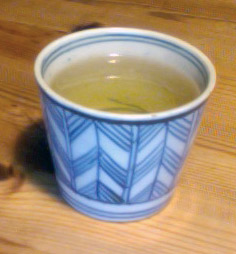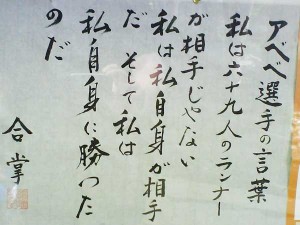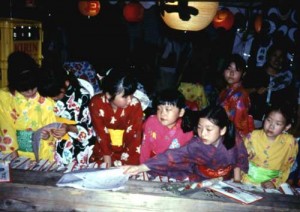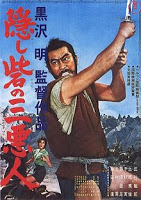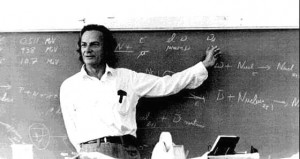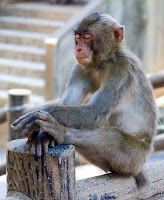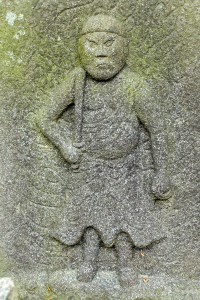Aside from teaching Zazen and Hitsuzendo, I am working in the field of research and education. Being a scientist is much more than just a bread and butter job, allowing me to eat and drink and have a roof over the head.
In science, we never believe anything. Whatever some authority in the field tells us, however famous the old master might be whose message the young student is supposed to hear: the first and most important thing for a scientist is not to believe!
Instead of learning a canon of old sermons by heart, take them as ultimate truth and repeat them over and over again, we must gain our own experience and re-derive and understand the contents and meaning of the words handed down from previous generations ourselves. And while doing so, we scientists by and by meet the old masters, be it Newton, Einstein, Hilbert, Curie or Crick, on eye-level.
During a scientific discussion (which can become a wild and almost violent thing, as I just witnessed on a conference last week) the ultimate call is: “Show it!” Give the proof yourself, in all detail, until I can understand it! If you fail to do so, regardless of your academic status or rank, your message is nothing worth, and be it the original and authentic words of some godfather of science himself!
No student of Physics, for example, is supposed to learn by heart, or even read, the original texts written by Newton or Einstein. He or she can get an up-to-date edition of the polished essence of Newton’s and Einstein’s work in a modern fashion, written by a splendid and possibly still active scientist, in contemporary language in any university book-store. The young scientist is expected to become able to derive, and re-formulate in his or her own words and understanding, the core of his science, in the light of the current state of the art, by himself.
By this practice, I believe, we also do a good service for our ancestors. Besides remembering their cherished names, making generation after generation truly understand, we keep the wisdom alive and ever changing!
Even more, this way of living up to the understanding of the old masters, making their experience and wisdom ours by our own hard work, and not by learning by heart and believing, is truly similar to the Way of Zen! There is nothing we are supposed to believe in, unless it is acquired through our own experience.
Even if we happen to meet the Buddha himself, if he can not show it, if we do not give our best to catch up with his level of understanding, Buddha’s words have no value for us!
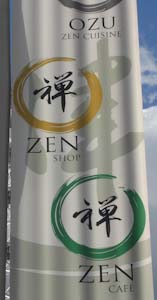 That’s why I had a this-is-not-really-o.k. kind of feeling, when I discovered a restaurant (Japanese, Chinese and coffee-shop) next to the London Eye. The location is boasting with the name “Zen”, and using a (seemingly computer generated) Zen-circle (Enso) enclosing the Japanese character “Zen” 禅 as a logo.
That’s why I had a this-is-not-really-o.k. kind of feeling, when I discovered a restaurant (Japanese, Chinese and coffee-shop) next to the London Eye. The location is boasting with the name “Zen”, and using a (seemingly computer generated) Zen-circle (Enso) enclosing the Japanese character “Zen” 禅 as a logo. Not mentioning “Zen” anywhere (and possibly even embarrassed by my comparison), you can learn about a Tenzo’s Zen-heart, when you read Tokyo Dinner’s statement “Why no tuna?”. Or if you just go there and taste yourself!
Not mentioning “Zen” anywhere (and possibly even embarrassed by my comparison), you can learn about a Tenzo’s Zen-heart, when you read Tokyo Dinner’s statement “Why no tuna?”. Or if you just go there and taste yourself!